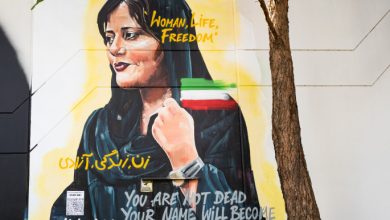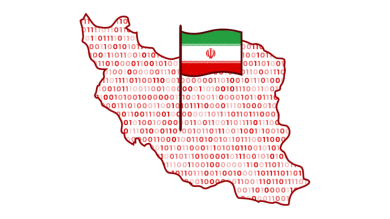Iran, a country rich in natural resources, cultural heritage, and human capital, remains economically stagnant due to gender discrimination and systematic oppression of women. The Islamic Revolutionary Guard Corps (IRGC) and state policies have imposed severe restrictions on women’s rights, blocking their economic participation and hindering Iran’s overall growth.
Despite the high education levels among Iranian women, their labor force participation remains one of the lowest globally, with legal barriers, workplace discrimination, and cultural restrictions keeping them economically dependent and politically marginalized. This exclusion doesn’t just affect women—it cripples Iran’s economy, leading to lower GDP, reduced productivity, and increased poverty.
This article explores:
• The current state of women in Iran’s economy.
• How IRGC-enforced gender oppression restricts economic opportunities.
• The wider economic consequences of gender discrimination.
• How Iran can unlock its full economic potential through gender equality.
1. The Reality of Women’s Economic Participation in Iran
A. Highly Educated, Yet Unemployed
Iranian women are one of the most educated populations in the Middle East:
• 60% of university graduates in Iran are women.
• STEM fields have high female enrollment, with women excelling in engineering, medicine, and sciences.
• Literacy rates among Iranian women have increased significantly over the decades.
However, this education boom has not translated into economic participation:
• Women’s labor force participation in Iran is only 14%, among the lowest in the world.
• Unemployment rates for women remain double that of men, even for highly skilled professionals.
• Legal and cultural barriers prevent women from accessing the formal workforce.
B. Systemic Legal Barriers
The IRGC-backed regime enforces a legal framework that actively prevents women from full economic engagement:
• Women need a husband’s or father’s permission to work in many cases.
• Restrictions on travel and public presence make it difficult for women to engage in business.
• Women are barred from leadership roles in government, finance, and judiciary.
• Maternity laws and discriminatory hiring practices discourage companies from employing women.
These policies waste Iran’s most valuable resource—its educated female workforce.
2. The IRGC’s Role in Enforcing Gender Oppression
A. Economic Control by the IRGC
The IRGC dominates Iran’s economy, controlling:
• Oil and gas sectors.
• Construction and infrastructure projects.
• Banking, trade, and military industries.
By limiting women’s participation in key industries, the IRGC monopolizes power and ensures economic dependency on the regime.
B. The IRGC’s Crackdown on Women Entrepreneurs
• Women-owned businesses face harassment, shutdowns, and excessive regulations.
• Female entrepreneurs who challenge state narratives are arrested or exiled.
• Digital businesses and influencers are often targeted, limiting alternative economic opportunities.
C. The IRGC and the Hijab Economy
• The mandatory hijab laws not only restrict women’s freedom but also limit their economic activities.
• Women are fired from jobs for not wearing the hijab or for speaking out against gender discrimination.
• The IRGC profits from the oppression by investing in surveillance technology, morality police, and censorship tools to control women’s actions.
By oppressing women economically, the IRGC strengthens its hold on Iran’s society and economy.
3. The Economic Consequences of Gender Discrimination
A. Billions in Lost GDP Growth
• The World Bank estimates that gender inequality costs economies trillions of dollars in lost productivity.
• Countries that increase women’s participation in the workforce see economic booms.
• If Iran eliminated gender barriers, its GDP could grow by 30-40%.
B. Brain Drain and Talent Loss
• Highly educated Iranian women are leaving the country in record numbers, seeking opportunities abroad.
• This “brain drain” weakens Iran’s economic competitiveness.
• Iran invests in women’s education, only to see them contribute to other economies.
C. Increased Poverty and Economic Instability
• Families suffer financially when half the population is restricted from working.
• Single mothers and widows face extreme poverty due to lack of financial independence.
• Excluding women from the workforce leads to lower household incomes and economic stagnation.
Gender oppression is not just a human rights issue—it is an economic disaster.
4. The Global Comparison: Lessons from Other Countries
A. Saudi Arabia’s Shift Toward Gender Inclusion
Even Saudi Arabia, long known for its gender restrictions, has begun reforms:
• Women can now drive, travel freely, and start businesses with fewer restrictions.
• Labor force participation of Saudi women rose from 17% in 2016 to over 37% in 2022.
• These changes have boosted the Saudi economy, attracting investment and increasing GDP growth.
Iran lags far behind in gender reforms, keeping its economy stuck in stagnation.
B. Economic Booms in Countries That Empower Women
• Rwanda achieved economic growth by ensuring women hold 61% of parliamentary seats.
• Bangladesh saw a remarkable economic rise after investing in female employment in its garment industry.
• Nordic countries rank highest in economic growth because of gender equality policies.
Iran’s future economic success depends on empowering women—not restricting them.
5. How Iran Can Unlock Its Full Economic Potential
A. Ending Workplace Discrimination
• Eliminate laws that prevent women from owning businesses, working freely, and traveling independently.
• Implement equal pay policies and workplace protections against gender bias.
B. Reducing the IRGC’s Control Over the Economy
• The IRGC’s economic monopoly blocks reforms. Reducing its influence will open up industries for women.
• Sanctions on IRGC-controlled industries should be expanded to pressure reforms.
C. Supporting Women Entrepreneurs
• Access to business loans and funding must be expanded for women entrepreneurs.
• E-commerce and digital businesses provide opportunities for women to work beyond traditional barriers.
D. Lifting Digital Censorship
• Many Iranian women use social media and online businesses as economic lifelines.
• Removing internet restrictions will empower women to engage in the global economy.
E. Global Support and Policy Pressure
• The international community must pressure Iran to end gender-based oppression.
• Sanctions should target IRGC-backed businesses while supporting Iranian civil society organizations that help women.
6. Conclusion: A Future Where Women Drive Iran’s Economy
Iran’s greatest untapped resource is its educated, ambitious female population. By excluding women from economic participation, the IRGC is not only violating human rights but crippling the nation’s future.
Countries that prioritize gender equality see economic growth, innovation, and higher living standards. Iran can no longer afford to suppress half of its population. The path to economic prosperity lies in empowering Iranian women, not oppressing them.
Join Our Newsletter!
Stay informed with the latest updates, news, and ways to take action in the fight for justice and global security. Sign up now to get updates delivered straight to your inbox!





